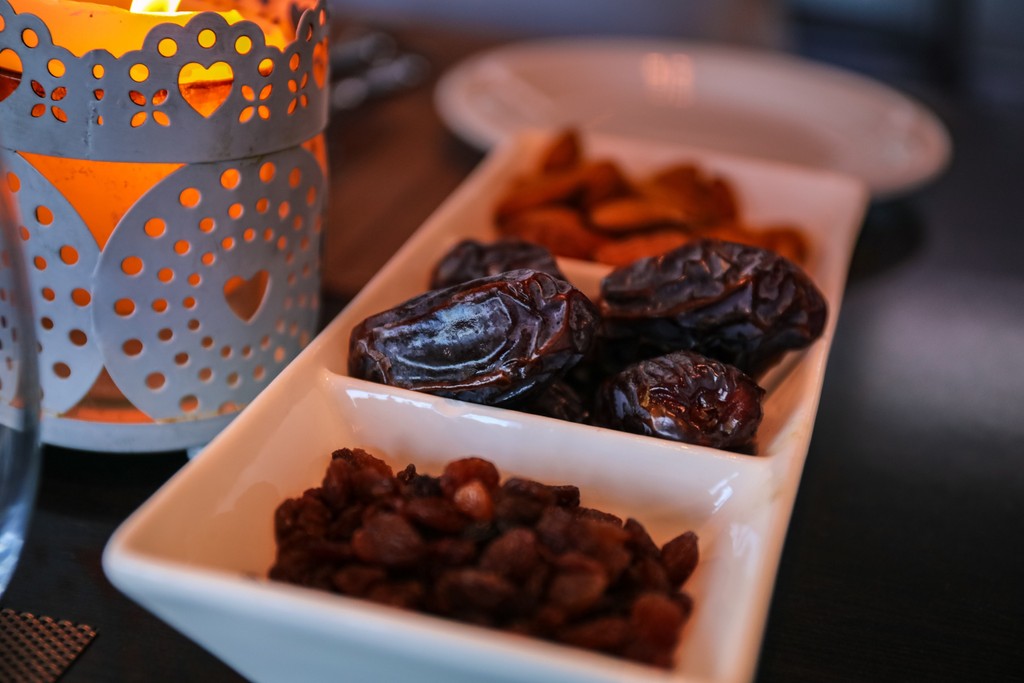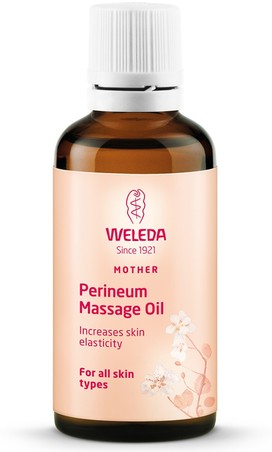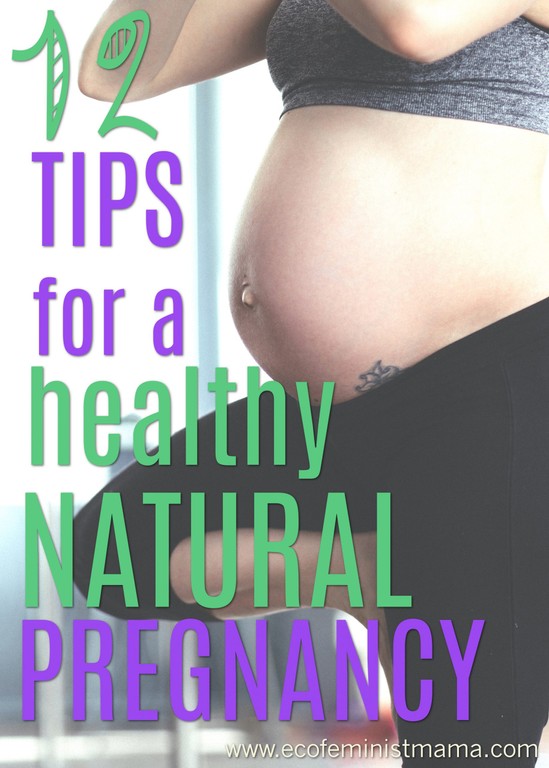Pregnancy is such an exciting time, full of possibility and hope as you slowly but surely create a new life, a brand new person with your body. That in itself is nothing short of a miracle, really – being able to create a whole new person inside your body. Most of us want to do the best we can to give that new person the best possible start in life. In this guide I’m going to share the best things you can do to have a natural pregnancy and prepare your body and mind for natural childbirth.
BABY! This is a reusable block, so whatever edits you make in it will apply everywhere it is used. If you want to remove this disclaimer from a post then be careful to delete the parent block (type ‘Reusable Block’ – icon is lego brick), and not to delete the group, image and/or the paragraph blocks (cos then they’ll be deleted from every instance of the reusable block).
Disclaimer: This post contains ethical affiliate links that I genuinely recommend. I may receive a small percentage of any purchases you make as a result of clicking those links. This comes at no extra cost to you and helps me to run this site. Read my full disclosure
1) Sort out your nutrition
The first thing you need to do for an optimal natural pregnancy is to make sure your nutrition game is on point. This isn’t about “eating for two”, that’s a complete myth. This is about having a holistic pregnancy diet, and making sure that both you and your baby have all the nutrients you need to complete the pregnancy with a healthy newborn baby.
I’ve got a full guide on how to have a healthy pregnancy, including a free downloadable nutrition print out which you can sign up for below. It’s focussed on vegan pregnancy but is still valuable for non-vegans. The main point for any natural pregnancy is is to be conscious about getting a balance of holistic prenatal nutrition.
If you want to make sure you are getting all your nutritional needs met in your natural pregnancy, check out my guide to prenatal supplements HERE.
2) Keep up your exercise
One myth surrounding pregnancy is that women should “take it easy”, but continuing to exercise during your pregnancy is incredibly important. The fitter you are throughout your natural pregnancy, the better your body will cope with the physical changes AND the easier labour will be.
Think about it as preparing for the most important sports event of your life – it’s well worth training for because you end up with something much better than a medal at the end of it!
It’s important not to suddenly start exercising more than you were before you became pregnant, however.
Ideally you would have increased your exercise levels in preparation for becoming pregnant (check out my guide to getting pregnant fast and naturally if you’re still in the TTC stage) so just start from where you’re at and try to carry on doing what you’re already doing.
I continued my regular routine of cross-training at home 3-4 times a week and going to my weekly ballet class right up to week 38 of pregnancy. I had to start slowing down a bit in my third trimester, but I was very proud that I managed a pirouette in my last class! (Disclaimer though, I’ve done ballet all my life, went to ballet school and did other forms of dance and movement as part of my first degree, so I knew what I was doing. Don’t take this blog as a recommendation to suddenly start trying pregnancy pirouettes!)
Remain active, stick with forms of exercise that you are already confident in doing, and don’t push yourself too hard. You should still be able to hold a conversation while exercising when pregnant and not aim to be significantly more active than you were before.
This isn’t the time to suddenly start trying to become super fit and, if you’re worried about pregnancy weight gain, always put the safety of you and your baby above any desire not to put on weight. Your body IS going to change throughout and after your pregnancy, and exercise and nutrition should always be something that supports a holistic natural pregnancy.
If you take up any new non-prenatal exercise classes at this time, always let your instructor know you’re pregnant and make sure you talk to your personal health provider first.
3) Get thee to a pregnancy yoga class
Speaking of exercise, going to a good pregnancy yoga class is one of the best investments you can make if you want to have a healthy, natural pregnancy. At the time of writing, the UK is only just emerging from lockdown due to the COVID-19 pandemic, so online is currently the only way to go here, but once lockdown is over I definitely recommend getting out there to a prenatal yoga class if you have one nearby.
I found one a short walk away that not only served as excellent exercise, but provided herbal tea and snacks afterwards to give us a chance to get to know other local mums-to-be. Honestly I sort of wish I was pregnant again just so I could go to a lovely relaxing weekly yoga class!
Our teacher also gave us a number of labour tips, birthing positions, breathing methods and other natural childbirth techniques to help us on the big day. She was trained in prenatal yoga so was able to provide bespoke advice for mamas suffering from things like pelvic girdle pain and other pregnancy related aches and pains. Always make sure you find a class run by someone who has had specific prenatal yoga training in order to get specialist knowledge and feel safe in the exercises you’re doing.
If you want a good starting point, I also found UK-based Lush Tums which tries to hook you up with a local teacher. They also offer meet ups so you can get to know other mums-to-be in your area, all in preparation for those obligatory bleary-eyed postnatal coffee mornings once baby is here.
4) Start doing the spinning babies® daily essentials
When I was pregnant, I had to work hard to get over my fear of childbirth. It was so strong, right from when I was a kid, it actually convinced me I would never have children at all.
One of the things I realised was that I’d been hugely influenced by depictions of childbirth in film and TV. I suspect I’m not alone in this. Images of traumatised women screaming in agony surrounded by masked doctors and nurses in high-drama acting mode are still pretty much the norm when it comes to birth depiction. I had no other reference for what childbirth could look like.
One scene that really stuck with me from a young age was from one of my favourite movies as a kid, Robin Hood: Prince of Thieves (#nojudgementpls I was 10 and it was the best thing EVER, okay?)
Anyway, Little John’s wife is in labour in a tent in the forest and, being the wise purveyor of all knowledge that he always is, Morgan Freeman tells her that “the baby has not turned – it cannot be born without help”. Then some casual racism happens so Kevin Costner comes along and makes it okay for a black man to perform an emergency c-section by helping deliver the baby himself.
Being 10, this whole scene had to be explained to me afterwards and I was utterly horrified. I still didn’t entirely understand what a c-section was but it sounded bloody awful from outside of that tent. Oh, and then you end up with a screaming baby covered in jelly and some other grossness, so I said thanks no thanks.
Somewhere during that first viewing and the other, ooooh, 40 or 50 more times I watched it (I’m not kidding. But it had peak 90s Christian Slater in it, what was I supposed to do?!) it must have become ingrained in me that childbirth was nothing less than torture.
Disclaimer: NONE of this is to say that cesarean section, (or ‘abdominal birth’ as Milli Hill calls it) is inherently “bad” or some kind of failure of a birth. Absolutely not. Birth is birth and ALL birthers are amazing, no matter how the baby is finally born.
By the time I was actually pregnant and preparing for childbirth, I was set on having a natural home birth. It was just how I wanted my daughter to be born and how I wanted my experience of birth to be. I knew I needed to make sure that my baby was slap bang in the right place so I didn’t have my own “the baby has not turned” moment.
Somewhere in a natural birth Facebook groups I heard about SpinningBabies® and took a look at their site. It quickly became clear that midwife Gail Tully and her team are the absolute experts on everything to do with building an optimal physiological mother-baby relationship to make the birthing process as easy as it can be.
If you’re in the final stages of your pregnancy and at all worried about the position of your baby, this is definitely where you need to go.
If your baby is currently breech, they have an ebook to help you literally turn things around.
A close family member of mine is currently 39 weeks with her second baby and was facing a potential induction due to her baby’s position. After just one afternoon of doing the SpinningBabies® daily essentials routine, the baby turned around and is now happily sitting in the right place. That was enough to take the threat of induction (and the series of escalating interventions that usually follow induction) right off the table.
Even if there’s no concern about the baby’s position and, like me, you just want to do whatever you can to have a natural pregnancy, start practicing the SpinningBabies® Daily Essentials routine.
I followed these exercises every day starting from the beginning of my third trimester and, when Ursula decided it was time to engage, my midwife described her as being in the “perfect position”.
The website has lots of free as well as paid resources to help you prepare for your natural birth and learn all the natural childbirth techniques you’ll need for success.
5) Go to an osteopath
Osteopaths aim to work holistically with the body to improve skeletal alignment, increase joint movement, ease pain, help the body to recover from injury, enhance blood supply and much more. I went to an amazing pregnancy-specialist osteopath for a weekly session, initially with the aim to sort my lower back aches in time for the marathon of birth. I gained so much more from it though.
Certainly if you have any ongoing physical issues like back problems, I highly recommend going to an osteopath to get them seen to. Osteopaths are great for general prenatal wellness too though. With me, Lucy spotted that my pelvis was misaligned (not helpful if you’re planning to push a small human through it!) and was able to fix it. Plus, it was a wonderful weekly session of both self-care and much-needed support and conversation. She was so knowledgeable and interested in pregnancy that I felt almost like I was gaining the social benefits of having a doula. As a quick disclaimer though, I feel I should highlight the NHS advice on seeing an osteopath during pregnancy:
“If you’re pregnant, make sure you seek advice from your GP or midwife before you see an osteopath. You should also make sure you see an osteopath who specialises in muscle or joint pain during pregnancy.”
6) Eat 4-6 dates a day
Bear with me on this one, because I know it sounds a bit old-wives-tale-y, but several major studies (referenced below) have found a number of significant and very important benefits to eating between 70-75g (or 4-6 depending on size) of dried dates everyday in the 4 weeks running up to your gestational due date.
Cervical dilation and ripening improves, meaning that the initial stages of birth will run more smoothly, and the Al-Kuran et al study found that 96% of women eating dates went into labour spontaneously in comparison to 79% of women in the non-date-eating control group. Induction and interventions were reduced, and the first stage of labour was shorter.
All the studies below found benefits to daily date consumption and concluded that the likelihood of interventions and augmentations were decreased, so if you’re wanting a natural birth then get eating!
I realise that dates are one of those love/hate foods though, so if you’re not a fan head over to Pinterest where I’ve created a board of recipes that sneak dates in so hopefully you’ll be able to tolerate them! Give me a follow while you’re at it as I post loads of natural, ethical pregnancy, birth and baby-raising tips.
References:
Al-Kuran, O., et al. (2011). “The effect of late pregnancy consumption of date fruit on labour and delivery.” J Obstet Gynaecol 31(1): 29-31.
Kordi M, Meybodi FA, Tara F, Shakeri MT. (2014). “The effect of late pregnancy consumption of date fruit on cervical ripening in nulliparous women.” Journal of Midwifery and Reproductive Health 2:150–156.
Razali, N., et al. (2017). “Date fruit consumption at term: Effect on length of gestation, labour and delivery.” J Obstet Gynaecol: 1-6.
7) Do regular perineal massage
Right, here’s where the squeamish might start to feel challenged. However, I do politely suggest that, if you’re pregnant and squeamish about things like vaginas and buttholes, you’re on a race against the clock to get over that one. I picked lumps of my 2 year-old potty training daughter’s poop out of the bath water with my bare hands today. It went all mushy in my hands and got under my nails. This is the life that lies before you if you didn’t already know.
With that blunt non-trigger-warning out of the way, let’s talk about that bit of skin between your vagina and your anus: the perineum.
During labour, there’s a HUGE amount of pressure on this part of the body. It needs to stretch an enormous amount in order to deliver the baby and it will often tear (OUCH). At least one third of birthing women in the UK and US experiencing a perineal tear during natural childbirth.
Meanwhile, one particularly painful medical intervention during labour is the episiotomy, where a doctor or midwife cuts the perineum (SERIOUSLY F’ING OUCH) in order to make more space for the baby to come through. Personally I believe episiotomies are an outdated and unnecessary practice that have no place in a 21st century birth and I’ll write a post about why at some point.
Meanwhile around 85% of women have a perineal tear or episiotomy during labour so some kind of perineal laceration during birth is pretty damn common.
Finding that statistic in my research for this post, I suddenly feel SO grateful and blessed to not have had either a tear or episiotomy. The most serious ones can cause months of postpartum agony and I only had some minor internal grazing to put up with.
I won’t say I was “lucky” not to have one though. I very deliberately prepared my perineum in advance for the huge task it was about to undertake, and I did it via daily massage. Yup, if you’re 34 weeks plus, it’s time to lube-up, squat in a very unglamorous position while heavily pregnant and get stuck into some hard-to-reach places…
8) Keep up (or pick up) your kegels
On the subject of nether regions, we all do our pelvic floor exercises every day, right?? Well, probably just when we remember to be honest but, whether you’re a regular fanny clencher or not, now is the time to get serious when it comes to Kegels.
In case you’re not familiar, Kegel exercises strengthen the pelvic floor muscles (the ones you clench when you’re trying to stop yourself doing a wee). They are particularly helpful during pregnancy to help you avoid incontinence and even a prolapse of the uterus after birth. Also, it just makes damn good sense to have your pelvic floor strong and healthy if you’re going to try and push a human through it.
You can start doing pelvic floor exercises from the very beginning of your pregnancy and it’s highly recommended that you do. There are lots of sites with different methods but personally I recommend following the instructions on the NHS website.
9) Research the birthing process
It might sound obvious but I’ve met a surprising number of women who went into childbirth not really knowing anything about the birthing process or how it works.
Knowing what the body’s natural birthing processes are is vital if you want to have a successful natura; pregnancy and all-natural birth, as you’ll be better equipped to work with your body when you do go into labour.
Many natural mama bloggers recommend Ina May Gaskin’s book Ina May’s Guide To Childbirth as the Bible on natural childbirth and birth without fear.
I’m going to go against the grain here and say I was rather nonplussed by it. I found it a very dry read as well as unhelpfully US-centric. She was often talking about things that simply didn’t apply to me e.g. the US medical system and it was difficult to find where the value was as someone in the UK. That said, it does have some powerful birth stories, useful natural childbirth techniques and some fascinating information about what happens to the body during labour.
Personally the two books that made me feel the most well-prepared and informed about what I was going to go through (whilst actually being fun to read!) were The Happy Birth Book by Beverley Turner and Pam Wild, and The Positive Birth Book by Milli Hill.
Although the similar titles would suggest they do the same job, I found reading and referring to both of them made for an exceptional combination.
The Happy Birth Book is formatted as an A-Z of everything you could possibly want to look up about childbirth and the initial postpartum period. Meanwhile, The Positive Birth Book is broken up into different sections on things like how to plan your birth, what happens during labour, different options for where you birth (in the UK) and a “What if X happens?” section. Between the two of them, these books give you all the information you need about how to give birth. Knowledge is power and you’re never so powerful as you are when you’re bringing a new human into the world.
10) Make a birth plan (and be careful who you share it with!)
Once your body is prepared and you’ve done your homework, it’s time to start making a nuts and bolts plan for how you want your birth to go. If you’re reading that and thinking “Nah, I’ll just go with the flow and see what happens”, let me try and drive this home:
YOU 👏 NEED 👏 A 👏 BIRTH 👏 PLAN 👏
Let’s take a look at the other significant things that you knew were going to happen in your not-too-distant-future that you obviously didn’t plan or prepare for because you just wanted to go with the flow and see what happens:
- Your driving test
- An important presentation at work that could lead to promotion
- Your wedding
- Hell, even your last holiday (remember those?)
It seems obvious to most of us that we prepare and plan for all of the above, yet so many birthing women seem to be almost wilfully unprepared for labour. Sadly, so many women I’ve met could have had less traumatic birthing experiences had they been better prepared.
If you have a robust birth plan, it’s not that it magically dictates exactly how your birth is going to go. Of course unexpected things happen and you should think about how you will cope if things don’t turn out how you wanted them to.
But what a birth plan does, which is absolutely vital for an empowered birthing experience, is it lays out all the different options and scenarios possible and forces you to think about what you would choose in any situation. This puts you, your body, your choices and your voice very firmly in the driving seat rather than just giving your power away to whatever medical staff happen to be working on that particular shift at the time.
All of the worst, most traumatic birth experiences I’ve heard about have one thing in common: the woman giving birth felt that things were happening TO her without her full consent. Where she should have been is at the centre of the entire process, making informed and fully consensual decisions about her birth.
If you decide to not plan anything and just “see what happens”, what’s to say that you’re going to like what happens when you see and feel it happening to your body?
So now I’ve (hopefully) rammed it into you that you need a solid birth plan, I really recommend downloading these free visual birth plan symbols to help you start making decisions about your options (they accompany The Positive Birth Book I mentioned, which will help you make sense of all the various choices).
Midwives love these symbols because they can see at a glance what you want without having to wade through pages of text. 1-2 pages max of the relevant symbols printed out and inserted into your maternity notes is a perfectly acceptable and super simple way to present your birth plan to your care provider and anyone else who needs to know.
I also urge you to think very carefully about who DOES in fact need to know what your birth plans are. The walls of home and natural birth groups all over Facebook are littered with stressed-out pregnant women asking for advice on how to convince their brother-in-law that their birth plans are safe. I always have to hold myself back from going full-on caps lock on them with, WHYYYYYYYY ARE YOU TALKING TO YOUR BROTHER-IN-LAW ABOUT YOUR BIRTH PLANS?!! Before you share them with anyone other than your partner, ask yourself whether you know for a fact that they are going to be supportive, positive and on your team when you share this personal information with them. If not, what exactly do you hope to gain from sharing something so personal?
A lot of people can’t help but assume that, in sharing information with them, pregnant women are asking for their advice or opinion on the matter. They also can’t help but share horror stories they’ve heard (or just seen on TV!) that do nothing but set off anxiety in women who are preparing for the major act of childbirth.
Personally I didn’t share my birth plan with anyone other than my husband, midwife and mum (who was acting as my doula). I’m very glad I didn’t too, since many people I spoke to after the birth were utterly horrified that I’d had a natural home birth. One woman reacted as if I’d just told her I gave birth in a bed of used heroin needles! You don’t need that kind of judgement while you’re trying to focus on having a positive natural pregnancy and birth.
11) Start hypnobirthing
Hypnobirthing is a combination of deep breathing techniques, affirmations and visualisations that are designed to get you into a state of relaxation and enable you to self-manage your pain during childbirth. If you’re wanting a natural birth and hoping to avoid the use of high-intensity painkillers (many of which inhibit your body’s ability to naturally bond with your baby after birth) then hypnobirthing is a must for you. I go into it in more depth in my Hypnobirthing 101 post over HERE.
I made the mistake of just using a free app and playing its affirmations a couple of times before I was due, but I really wish I had done a proper hypnobirthing course like the ones from KG Hypnobirthing.
When it came to my big day, it turns out I seriously overestimated my ability to cope with labour pains and, despite my preparation in a lot of other areas, I had very little in my toolbox in terms of ways to cope with the pain.
I’m so happy I gave birth at home with no access to medication because a drug-free birth was so important to me. I got through it but I DO wish I had taken hypnobirthing practice a bit more seriously and invested in it properly. Even if you’re not against using painkillers, hypnobirthing is still worth doing for those times when painkillers aren’t yet appropriate or have started to wear off.
KG Hypnobirthing have lots of excellent free resources available to give you the opportunity to get a taste for what they do. They have an amazing website with things like birth stories, pregnancy information and midwife testimonials to help you make a decision about whether their courses might be the right fit for you.
If you’d like to learn more now, here’s Ella from Deliciously Ella to tell you about her experience with KG Hypnobirthing:
12) Join the positive birth movement
The Positive Birth Movement was set up by the pioneering Milli Hill, whose mission it is to help women have a positive birth experience, change the cultural narratives surrounding birth, and empower women to make sure their rights, choices and autonomy are always protected. Her Positive Birth Book helped me to change my own perception of what birth could be and is largely responsible for me having a positive birth experience myself, so I very much recommend getting hold of a copy.
For those facing a lockdown birth, there is a dedicated Positive Birth During COVD-19 Facebook group offering support, up-to-date advice and information, as well as a directory of birth practitioners who may be able to offer you one-to-one positive birth support too. Not only that, Milli has teamed up with hypnobirthing practitioner Sophie Fletcher to bring out a special online course called the Positive Birth COVID-19 Rescue Pack, which is available on a sliding scale of payment in order to help as many women as possible (from all over the world) access it. The course includes:
- 11 specially made sections to give you the information and resources you need right now
- 4 specially made hypnobirthing tracks for positive birth in a global crisis
- 10 specially made videos featuring tips and insight from Milli and Sophie
- Dozens of tips, tricks, & techniques and 15 practical exercises to build a positive mindset toolkit
While the PBM isn’t specifically aimed at those wanting a natural birth, they really are doing phenomenal work in changing the narratives surrounding childbirth from one of fear and drama to something positive and empowering. If you’re wanting a natural birth, you’re definitely going to benefit from their ethos!
So that’s it for my tips on how to have a natural pregnancy and prepare for a natural birth. I hope you’ve found some of these tips helpful and I’d be really honoured if you come back to my blog and share your birth story with me when the time comes!






